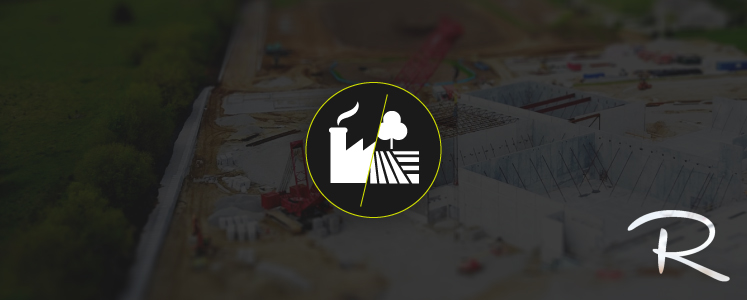
What happens when property developers have to choose whether to build on brownfield or greenfield land? There are pros and cons to each type of site and it may even depend on the specific requirements of the project as to whether one is a preferable option over another. In this blog, we take a look at some of the factors developers will need to take into consideration when making their decision.
What is the difference between brownfield and greenfield?
Put simply, brownfield land is a site that has been previously built on, which is why this is usually located in an urban area. Greenfield land is a site that hasn’t been built on – usually in a rural or countryside area.
Planning permission
It is generally easier to obtain planning permission for brownfield sites. In fact, the government are actively encouraging developers to build on brownfield land by aiming to approve the planning permission for 90% of the UK’s brownfield sites by 2020. In conjunction with this, they have placed further restrictions on developing greenfield sites to encourage developers to opt for brownfield sites instead.
Environmental concerns
The government’s increasing restrictions over the development of greenfield sites in recent years is to prevent the loss of countryside and wildlife. As there are already a plethora of brownfield sites, they are keen for developers to make better use of it before losing any more green spaces. There is also a concern about increased pollution in rural areas, as commuters will need to journey from their homes in the countryside into urban areas for work if more developments are built on greenfield sites.
Construction times
When building on a previously developed area, there is likely to be a higher risk of running into a complication that will delay the construction, as opposed to building on a completely clear piece of greenfield land. Brownfield sites can be in areas that were used for industrial purposes – such as factories, which may carry a risk of being contaminated. Any decontamination that needs to occur to make the site safe for occupation falls to the developer and rectifying the problem can set a project back.
Cost
The potential costs involved in clearing an area of brownfield land for construction can make a development more costly than if it had been built on a greenfield site. However, there are also cost benefits to be had, as some of the infrastructure for the development, such as roads, electricity lines and water supply, may already be in place, whereas they would have to be built on a greenfield site.
In summary, there are different considerations for developers when choosing between brownfield and greenfield sites but, wherever possible, brownfield land is a preferable option. There are numerous pros to redeveloping urban sites – which you can read about in our blog, the benefits of brownfield land regeneration – that outweigh any cons.
Keep up to date with all our latest news and views on social media: Facebook, Twitter, LinkedIn and Instagram.










